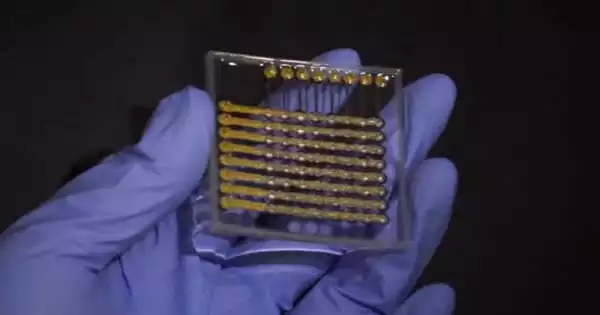Hosting a parasitic tapeworm is rarely a pleasant situation. However, the life of an infected ant known as Temnothorax Nylander is not the same.
As a young larva, suppose an ant of this species bites on some woodpecker feces and becomes infected with a tapeworm (Anomotaenia brevis). It may live three times as long as its colleagues, if not longer, and it will rarely have to move a mandible.
Uninfected ants will carry the worker around, feed it, and groom it for the remainder of its days. These spoiled ants hardly ever leave the nest.
A team of researchers led by entomologist Susanne Foitzik at Germany’s Johannes Gutenberg University has finally discovered a probable explanation for this bizarrely happy way of life.
The bloodstream of the ant appears to be pumped with proteins and antioxidants when a tapeworm establishes itself there.
Although it is still unknown what health implications these unique proteins have, there is a good possibility that they contribute to the infected ants’ ability to remain youthful and tasty.
An ant is not the tapeworm’s ultimate residence during its life cycle. The parasite has a stake in maintaining its temporary host youthful, chubby, and appetizing because its adult reproductive condition occurs in the body of a woodpecker. In this manner, when it grows up, it can end up being a bird’s breakfast.
The parasite is unconcerned about what happens to the ant colony as long as the infected ants survive until a woodpecker comes.
In 2021, Foitzik and her colleagues in Germany observed that while Temnothorax ants infected with tapeworms lived comfortably, the uninfected in a colony paid for their peers’ lethargy.
These worker ants perished sooner since they were now responsible for their diseased counterparts. Although neither the sick ants nor their attentive caregivers displayed any physiological signs of stress, workers showed less loving care to their queens while tending to the diseased, which could mean danger for the colony.
Because the infected ants appeared so young, the researchers were intrigued as to what could be causing them to live longer.
Researchers compared infected and uninfected ants in their latest study, which has yet to be peer-reviewed, this time looked at protein levels in the ants’ hemolymph (the equivalent of an invertebrate’s lifeblood).
They discovered that a tapeworm’s proteins accounted for a “substantial portion” of those flowing through an individual’s hemolymph, with antioxidants being two of the most abundant.
Other proteins may explain why infected ants are treated like royalty, however many were unrecognizable, with no known analog in other organisms.
One protein, vitellogenin-like A, identified in high concentrations in infected humans is produced by the ant rather than the parasite. It is known to govern work division and reproduction in ant societies.
As a result, researchers believe that this protein may impact ant behavior in such a way that it fools others into doting on them.
It’s still unclear if the tapeworm deliberately manipulates the gene expression of ant proteins like vitellogenin-like A or if it’s an unintended consequence of the parasite infection.
“Because caste differences in social insects are usually controlled by differential gene expression rather than genetic differences,” Foitzik and colleagues write, “hijacking pre-existing regulatory pathways that make an individual more queen-like might be an elegant strategy from the parasite’s point of view.”
However, showing that a parasite is influencing an ant body as opposed to an ant body acting in reaction to an invader would be extremely difficult, if not impossible; the authors stress that this potential manipulation pathway should be regarded with caution.
The German team intends to continue researching the parasite’s proteins in order to better understand how they may influence ant behavior, appearance, and longevity.
















